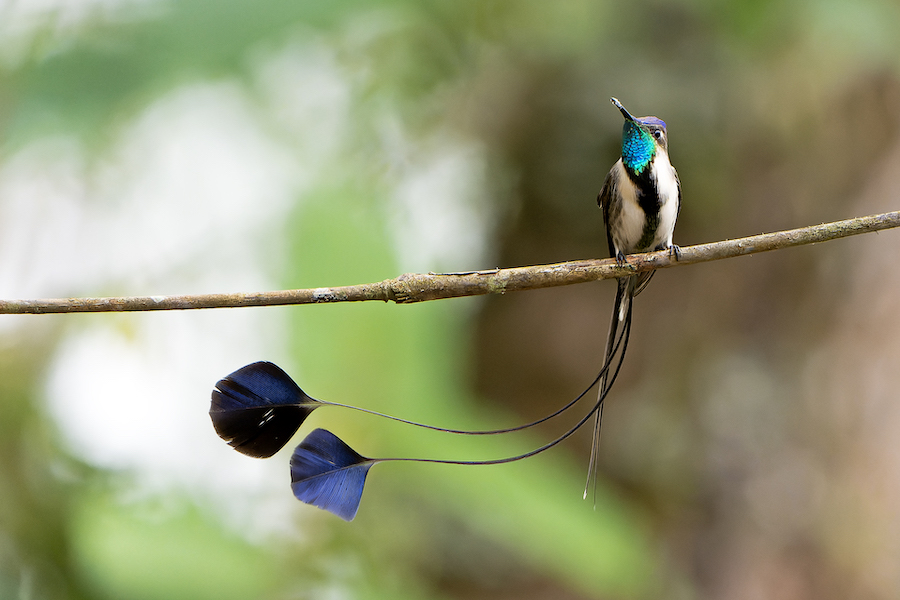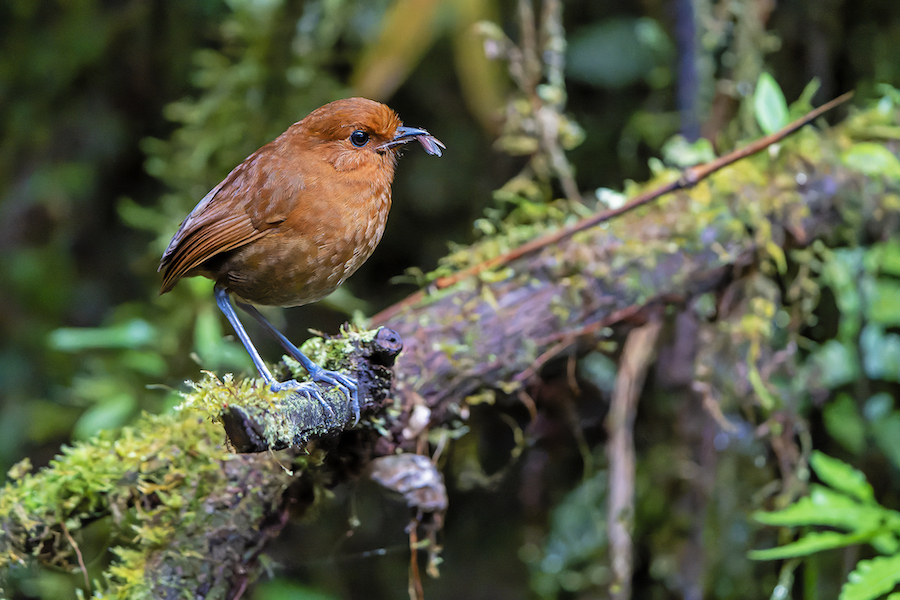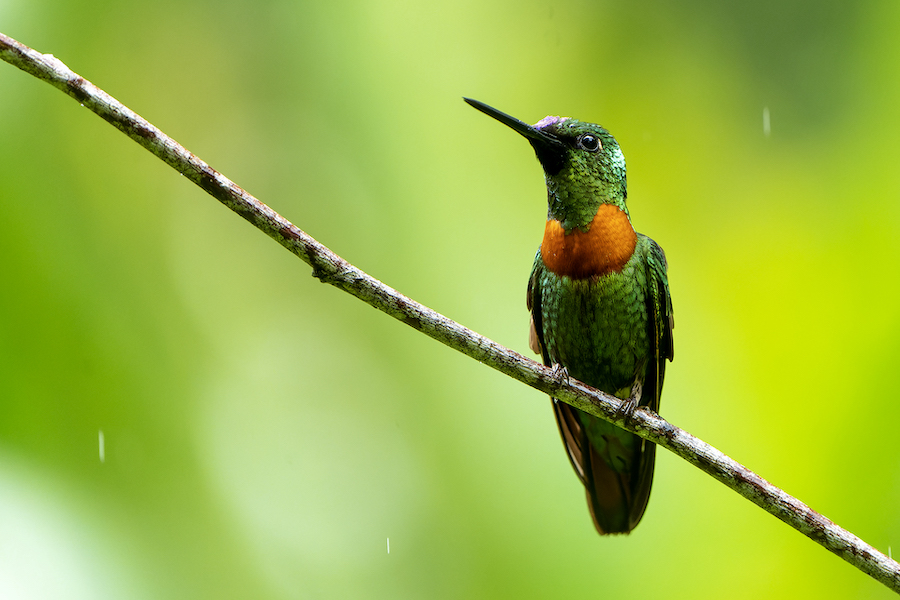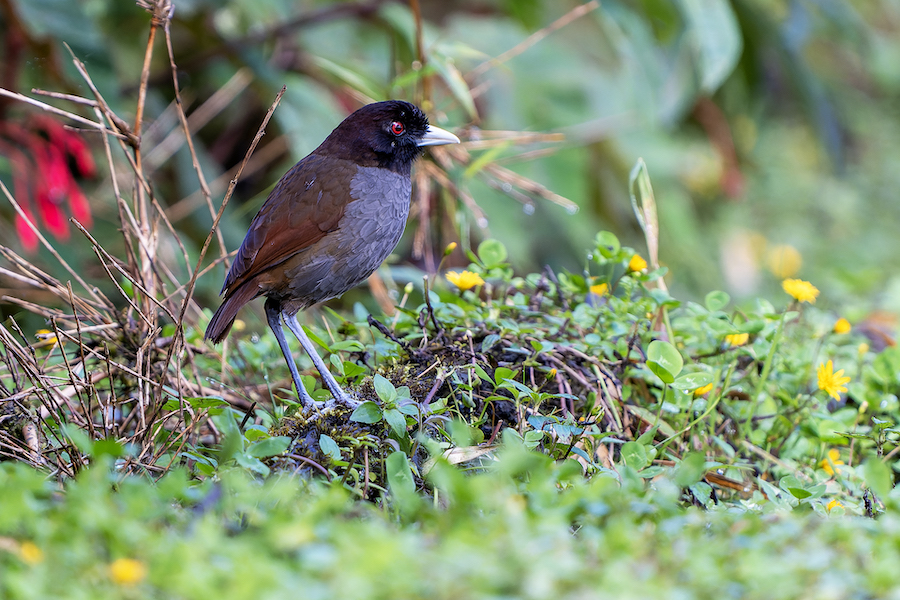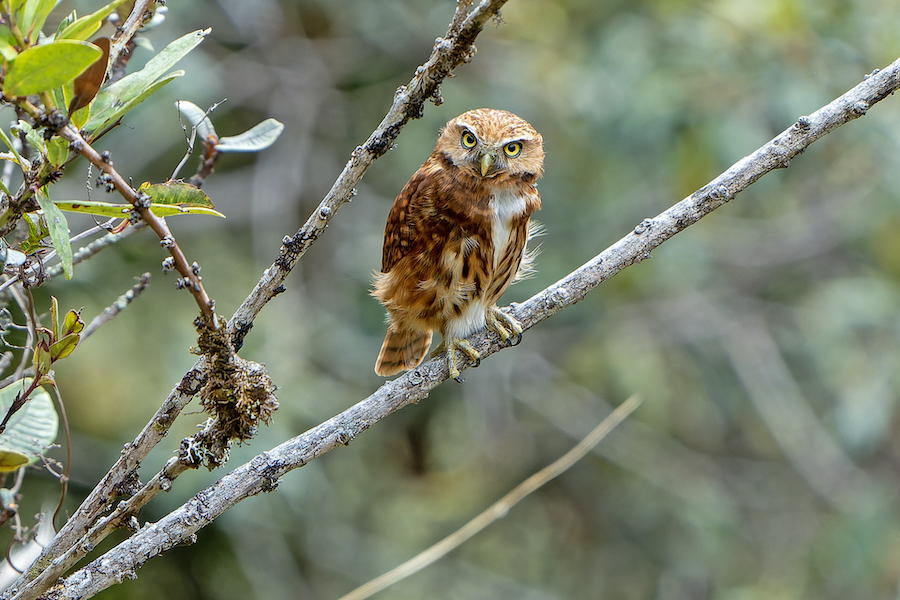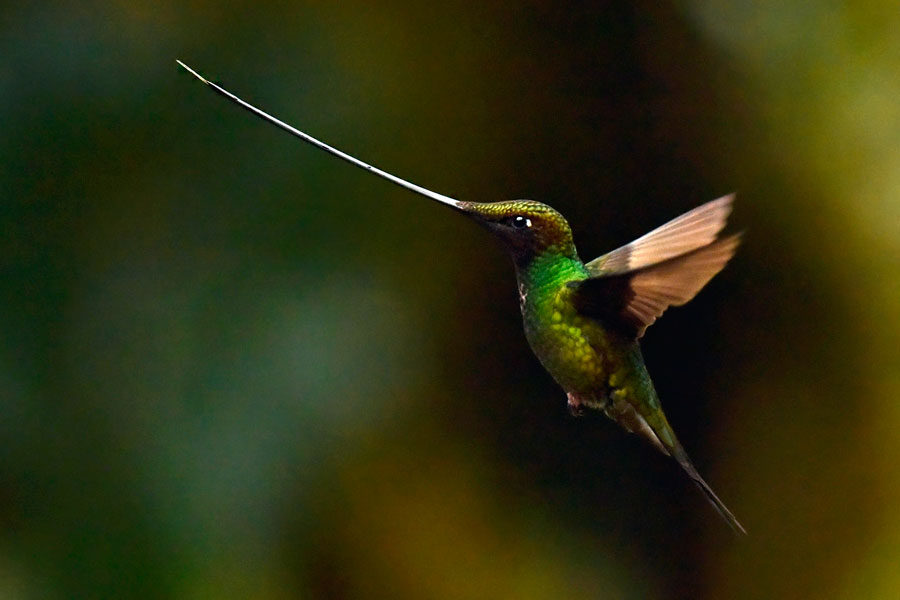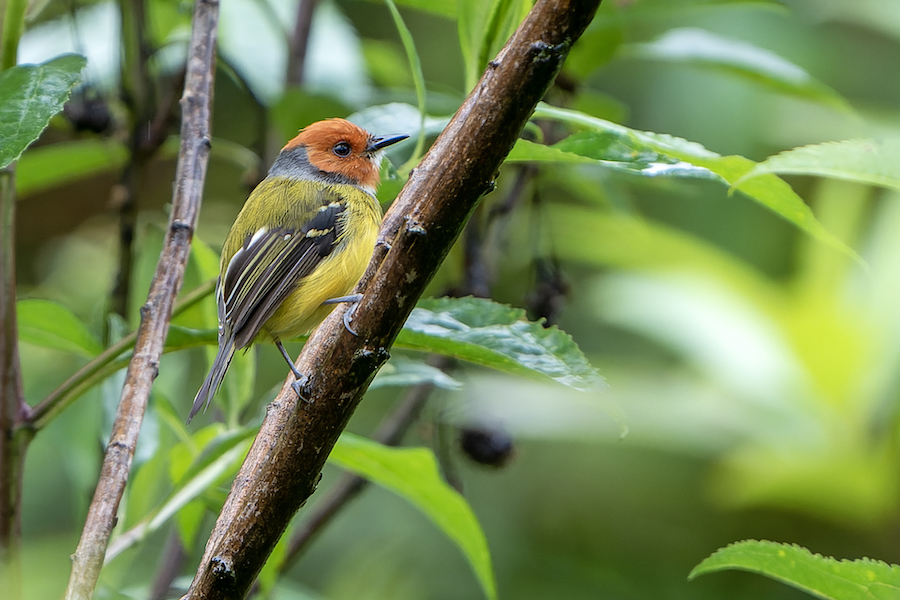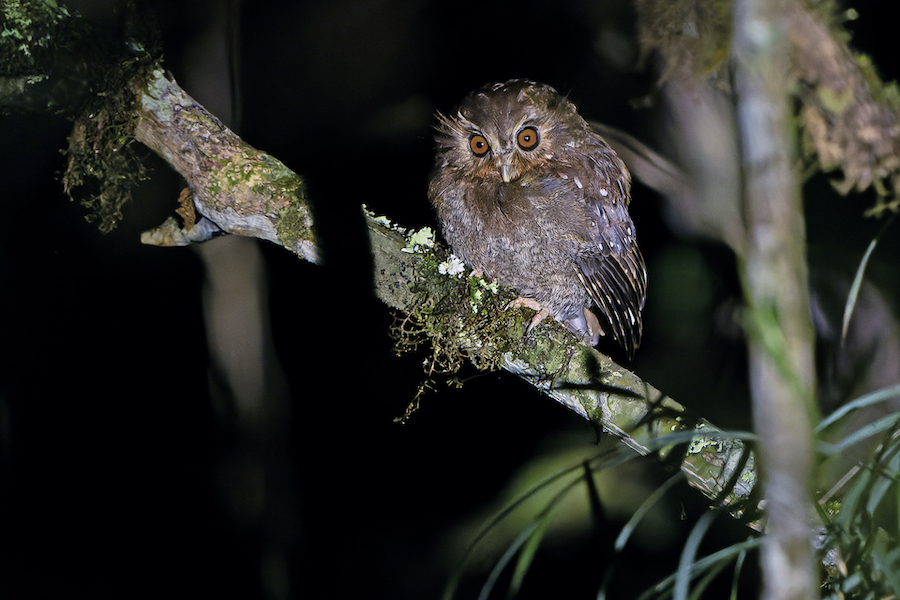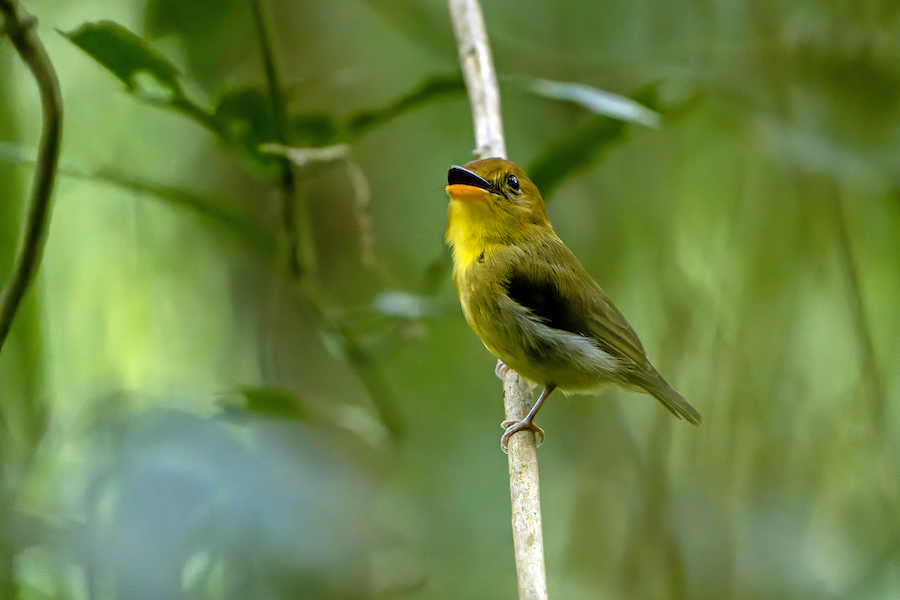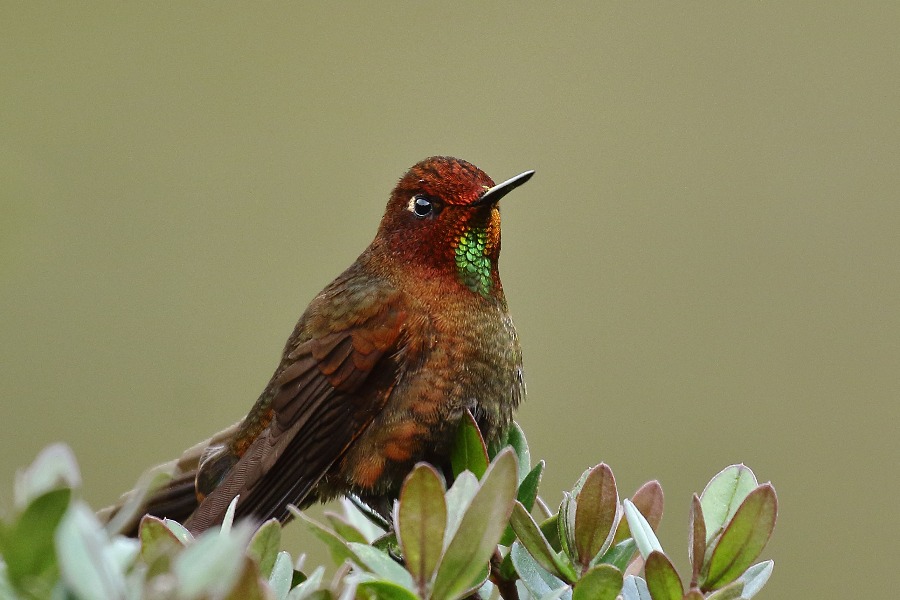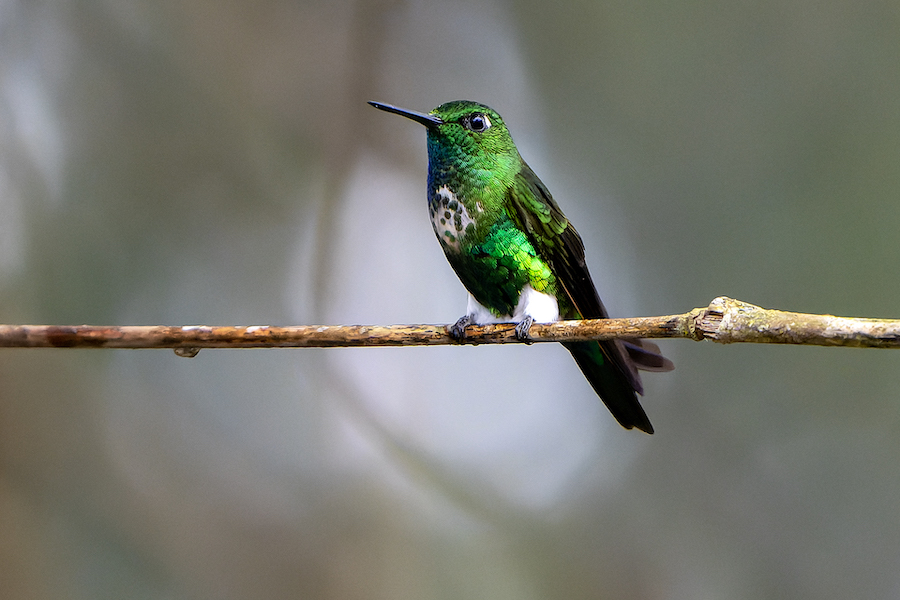Peru: Northern Andes
Some of the world’s best birds, including Marvellous Spatuletail, Long-whiskered Owlet, and Pale-billed Antpitta feature on this exciting tour. First covering the famous Plataforma area for Scarlet-banded Barbet, we then work towards the coast via a bunch of excellent hummingbird feeders, and the whole Andean elevational range!
Next Dates
2 December - 19 December 2025 (18 days)
Leaders:
Joachim Bertrands
Group Size Limit:
6
Single Room Supplement: $
520 USD
Deposit: $
750 USD
Price: $
7300 USD
Add a Title
Leaders:
Joachim Bertrands
Group Size Limit:
Add a Title
Single Room Supplement: $
TBD
Deposit: $
TBD
Price: $
TBD
Add a Title
1 November - 17 November 2027 (17 days)
Leaders:
Julien Mazenauer
Group Size Limit:
6
Single Room Supplement: $
600 USD
Deposit: $
750 USD
Price: $
7600 USD
Add a Title
Leaders:
Julien Mazenauer
Group Size Limit:
Add a Title
Single Room Supplement: $
TBD
Deposit: $
TBD
Price: $
TBD
Add a Title
Accommodation:
Mostly moderate or simple hotels, however the guesthouse at Flor de Café is basic.
Walking difficulty:
Mostly easy, sometimes moderate, but there will be a couple of optional harder walks in the San Lorenzo and Abra Patricia areas, as well as at Flor de Café, where the muddy trails can be challenging.
Tour cost includes:
All accommodation, main meals, drinking water, internal flights (as stated in itinerary), overland transport, tips to local drivers and guides, travel permits, entrance fees, and guide fees.
Tour cost excludes:
Flights before and after the tour start/end, visa, travel insurance, tips to tour leaders, laundry, drinks, and other items of a personal nature.


Day 1: The tour starts this afternoon at Tarapoto Airport (TPP). From there, we will drive to Bellavista. Night at Monteverde Hotel.
Day 2: We will leave early in our 4WD vehicles, heading to Flor de Café Village (formerly known as “Plataforma”), located at 1400m in the foothills of the Cordillera Azul. Stops on the way might produce Hoatzin, Limpkin, Snail Kite, Grey-necked Wood Rail, White-Winged Swallow, Blackish Pewee, Western Striolated and White-Necked Puffbirds, and Lemon-throated Barbet. Of course, our number one target here is the amazing Scarlet-banded Barbet, and we will start searching for it on our first afternoon. Owling can yield Foothill (Napo) and Rufescent Screech Owls and Band-bellied Owl. Night at Flor de Café.
Day 3: Full day looking for a number of specialities, including more chances of seeing the barbet, as well as the recently discovered Cordillera Azul Antbird, together with Chestnut-tipped Toucanet, Scaled, Fiery-throated and Scarlet-breasted Fruiteaters, the newly described foothill form of Long-tailed Woodcreeper, Rose-fronted Parakeet, Foothill Schiffornis, Grey-tailed Piha, White-Fronted Tyrannulet, Yellow-throated Spadebill, Dusky Leaftosser, Yellow-cheeked Becard, Jet, Yungas, and "Milky-rumped" Blue-rumped Manakins, Blue-browed Tanager, and many others. The list of uncommon birds of this area is truly extraordinary! Night at Flor de Café.
Day 4: After some early morning birding at Flor de Café, we will transfer via Bellavista to Tarapoto for an overnight stay, stopping en route to explore some lower areas with gallery forest and dry deciduous woodland. Birds to look for include Pheasant Cuckoo, the distinctive local form of "Huallaga" Northern Slaty Antshrike, Southern Chestnut-tailed Antbird, White-bellied Pygmy Tyrant, Pearly-vented Tody-Tyrant, Rufous Casiornis, Sulphur-bellied Tyrant-Manakin, Chestnut-throated Spinetail, Ashy-headed Greenlet, and Band-tailed Manakin. Night at Hotel Rio Cumbaza, Tarapoto.
Day 5 : The morning will be spent at a private reserve close to Tarapoto, where hummingbird feeders usually attract Koepcke’s Hermit, Gould’s Jewelfront, and sometimes Black-throated Brilliant, among others. Birding the trails should produce Golden-headed Manakin at a lek, and, if lucky, White-plumed and Hairy-crested Antbirds attending an ant swarm. Later, we will drive to Moyobamba, with a stop on the main road to look at some amazing Oilbirds at what’s surely the easiest place in the world to observe this extraordinary species. Night at Waqanki Lodge.
Day 6: All day birding around the lodge, searching for the recently-described Painted Manakin and the local form of Mishana Tyrannulet. The former has become harder in recent years, btu we will be working hard for it! Other species here include Buff-throated Tody Tyrant, Olive-chested Flycatcher, Dusky and Cinereous-breasted Spinetails, Red-shouldered Tanager, Lanceolated Monklet, and many more. Hummingbirds are a feature of the place and include Rufous-crested Coquette, Black-throated Hermit, White-chinned Sapphire, and others. Note that while Varzea Thrush has been a target here in the past, it has now seemingly disappeared from the area.
In the afternoon, we will visit a couple of lowland forest sites where Masked Duck, Russet-crowned Crake, Buckley’s Forest Falcon (if lucky), Bluish-fronted Jacamar, Pearly-vented and Stripe-Necked Tody Tyrants, Rusty-backed Antwren, Point-tailed Palmcreeper, Yellow Tyrannulet, Black-faced Tanager, and Wedge-tailed Grassfinch all occur. Nightbirds are well represented too and can include Stygian, Striped, and Tropical Screech Owls and Spot-tailed and Rufous Nightjars. Night at Waqanki Lodge.
Day 7: Today will be an action-packed day! Starting with a visit to Carrizal for the endemic Ash-throated Antwren, we also have chances for Wattled Guan, Masked Fruiteater, Violet-fronted Brilliant, Black-streaked Puffbird, and Black-billed Treehunter.
Afterwards, we will move to another site, Afluente, where mixed flocks can hold Ecuadorian Tyrannaulet, Equatorial Greytail, Grey-mantled Wren, and Bicoloured Antvireo, while Andean Cock-of-the-rock and Ecuadorian Piedtail are both present. Later on, we will move to Fundo Alto Nieva, where we will make our first evening attempt at the near-mythical Long-whiskered Owlet. If the weather is good, we have a fair chance of seeing this extreme rarity. Later, we will drive to Owlet Lodge in Abra Patricia, where we will spend the following 3 nights.
Days 8-9: During these two days, we will be birding at Fundo Alto Nieva and around Owlet Lodge, trying for Rusty-tinged and Ochre-fronted Antpittas, which at the time of writing are being fed with mealworms. Other species we will be focusing on include the astounding Royal Sunangel, Chestnut Antpitta, Rufous-breasted Antpitta, Bar-winged Wood Wren, Cinnamon-breasted Tody-Flycatcher, Vermilion, White-capped and Yellow-throated Tanagers, Olivaceous Piha, Lulu’s (Johnson’s) Tody-Tyrant, Maroon-belted Chat-Tyrant, Black-throated Toucanet, Inca Flycatcher, Saffron-Crowned, Yellow-scarfed, Red-hooded, and Grass-green Tanagers, White-collared Jay, Peruvian Tyrannulet, Olive Tufted Flycatcher, the endemic Rufous-vented Tapaculo, Streak-headed Antbird, Black-throated Tody-Tyrant, Rufous Spinetail, Rufous-headed Pygmy-Tyrant, and many more.
Our lodge has some very attractive hummingbird feeders that are visited by Green Hermit, Speckled Hummingbird, Fawn-breasted Brilliant, Bronzy and Collared Incas, Emerald-bellied Puffleg, Long-tailed Sylph, the amazing Sword-billed Hummingbird, and White-bellied Woodstars. Another nearby set of feeders can attract the white-thighed form of Buff-thighed Puffleg and the stunning Peruvian Racket-tail. In the afternoon, we shall move to Pomacocha. If needed, we will try again for Long-whiskered Owlet. Other nightbirds such as Rufous-bellied Nighthawk, Lyre-tailed Nightjar, Rufous-banded Owl, and Cinnamon Screech Owl are all present around the lodge. Nights at Owlet Lodge.
Day 10: Full morning around the lodge searching for whatever we might have missed, then transfer to Pomacochas. The early evening will be spent at a lake where we can see Puna Snipe, Plumbeous Rail, Speckle-chested Piculet, Subtropical Doradito, Rufous-winged Tyrannulet, Buff-bellied Tanager, "Baron's" Line-cheeked Spinetail, and Rufous-capped Antshrike. Night at Hotel las Brisas.
Day 11: An early start will be needed to reach a site for the elusive and spectacular Pale-billed Antpitta. As we hike up, we will try for White-throated Screech Owl. After an ascent, we will reach the highly fragmented forest patches in which our target bird lives. The distinctive “Grey-browed” Plain-tailed Wren is also here, as well as the superb Violet-throated Starfrontlet. We will also have our first chance to see the endemic Russet-mantled Softtail and the endemic Unstreaked Tit-Tyrant.
In the afternoon at Cocachimba Reserve, the incredible Marvellous Spatuletail will surely steal the show as it comes to feeders. One of the world's most evocative birds indeed! Others like White-bellied Hummingbird, Chestnut-breasted Coronet, Little Woodstar, Andean Emerald, and Sparkling Violetear will also be present at the feeders. Night at Hotel las Brisas.
Day 12: After some final morning birding in the area, we will drive to Leymebamba, stopping at Utcubamba Valley in search of Speckle-chested Piculet, Buff-bellied Tanager, Pacific Hornero, and Maranon (Speckle-breasted) Wren, and maybe Koepcke’s Screech Owl at a roosting place. This afternoon will be spent in the forest of Atuen Valley where Grey-breasted Mountain Toucan, Northern Mountain Cacique, Red-hooded Tanager, and Peruvian Treehunter are all possible. Night at Hotel la Casona.
Day 13: Mostly a driving day, but with a few nice short stops for some excellent birds! We will set off very early to go to the lower part of the Marañon Valley, where we will look for Yellow-faced Parrotlet and Peruvian Pigeon. After seeing these two, we continue to Hacienda el Limon, where we will aim to pick up Buff-bridled and Grey-winged Inca Finches, Chestnut-backed Thornbird, and Marañon Thrush. Towards the end of the day, we head to Abra Barro Negro where targets include Russet-mantled Softtail, White-chinned Thistletail, Coppery Metaltail, and Blackish Tapaculo, amongst others. Night at at Hotel la Casona.
Day 14: After a chance to try for Koepcke’s Screech Owl predawn if needed, we will take a long drive towards Jaen for an overnight stay. Stops along the way should produce Little Inca Finch, "Marañon" Black-capped Sparrow, "Marañon" Speckle-chested Wren, Marañon Thrush, Marañon Crescentchest, Marañon Slaty-Antshrike, and Chinchipe Spinetail. Night at Urku Hotel.
Day 15: A predawn start will see us hoping to find "Marañon" West Peruvian Screech Owl. Once it gets light, we will search for the uncommon Marañon Spinetail and Ecuadorian Ground Dove, while interesting subspecies include the isolated Marañon/Huallaga Valley race of Rufous-fronted Thornbird and the leucogaster race of Northern Slaty Antshrike. Afterwards, we will drive to Chiclayo, stopping at Abra Porcuya to look for Piura Chat-Tyrant and Henna-hooded and Rufous-necked Foliage-gleaners. Night at Hotel Inti.
Day 16: Early morning transfer to Bosque de Rafan, where Pacific dry forest specialities such as Rufous Flycatcher and Peruvian Plantcutter occur. A quick stop at Santa Rosa beach should produce Peruvian Tern, Least Seedsnipe, Many-coloured Rush Tyrant, Coastal Miner, and more. We will then move on to Chaparri Lodge, where our main target will be the endangered White-winged Guan, as well as Collared Warbling Finch, Elegant Crescentchest, Sulphur-throated Finch, and others. Night at Chaparri Lodge.
Day 17: Full morning birding around the lodge. Many of the birds occurring in these woodlands are restricted to semi-arid habitats in northwestern Peru and southwestern Ecuador (the so-called ‘Tumbesian endemics’), including Ecuadorian Trogon, Guayaquil Woodpecker, Grey-chinned Hermit, Tumbes Hummingbird, Chapman’s Antshrike, Pacific Elaenia, Grey-breasted Flycatcher, Tumbes Pewee, Tumbes Tyrant, Baird’s Flycatcher, Speckle-breasted Wren, Plumbeous-backed Thrush, Black-capped and Tumbes Sparrows, White-winged Brushfinch, White-edged Oriole, and Grey-and-gold and Three-banded Warblers. After lunch, we will head towards Tinajones Lake, where we will search for Tschudi’s Nightjar in the evening. Night at El Torito Lodge.
Day 18: After some final morning birding in the Casupe area, where we will search for Ecuadorian Piculet, Ochre-bellied Dove, and other Tumbesian endemics, we head to Chiclayo Airport (CIX), where the tour will end in the afternoon.

